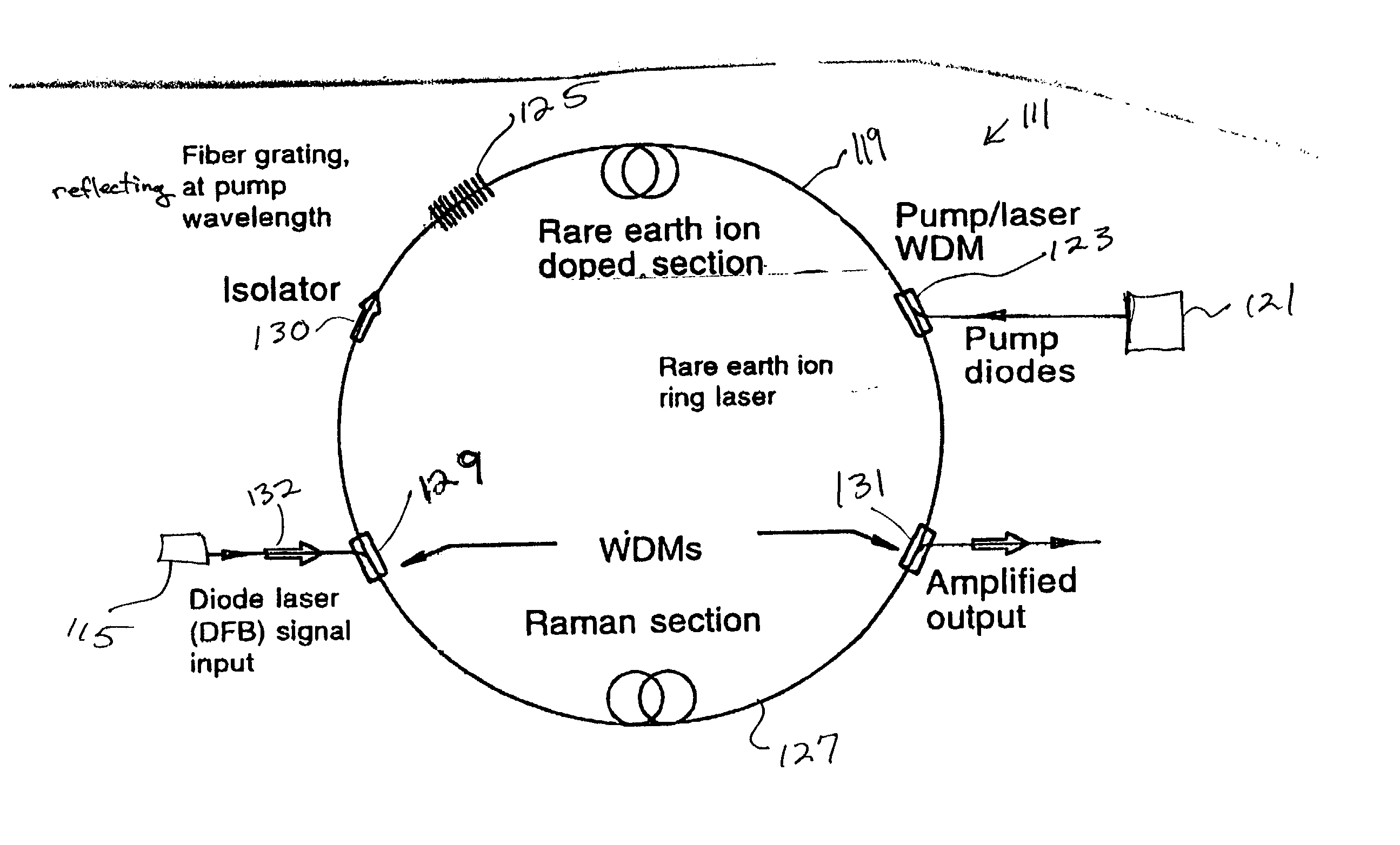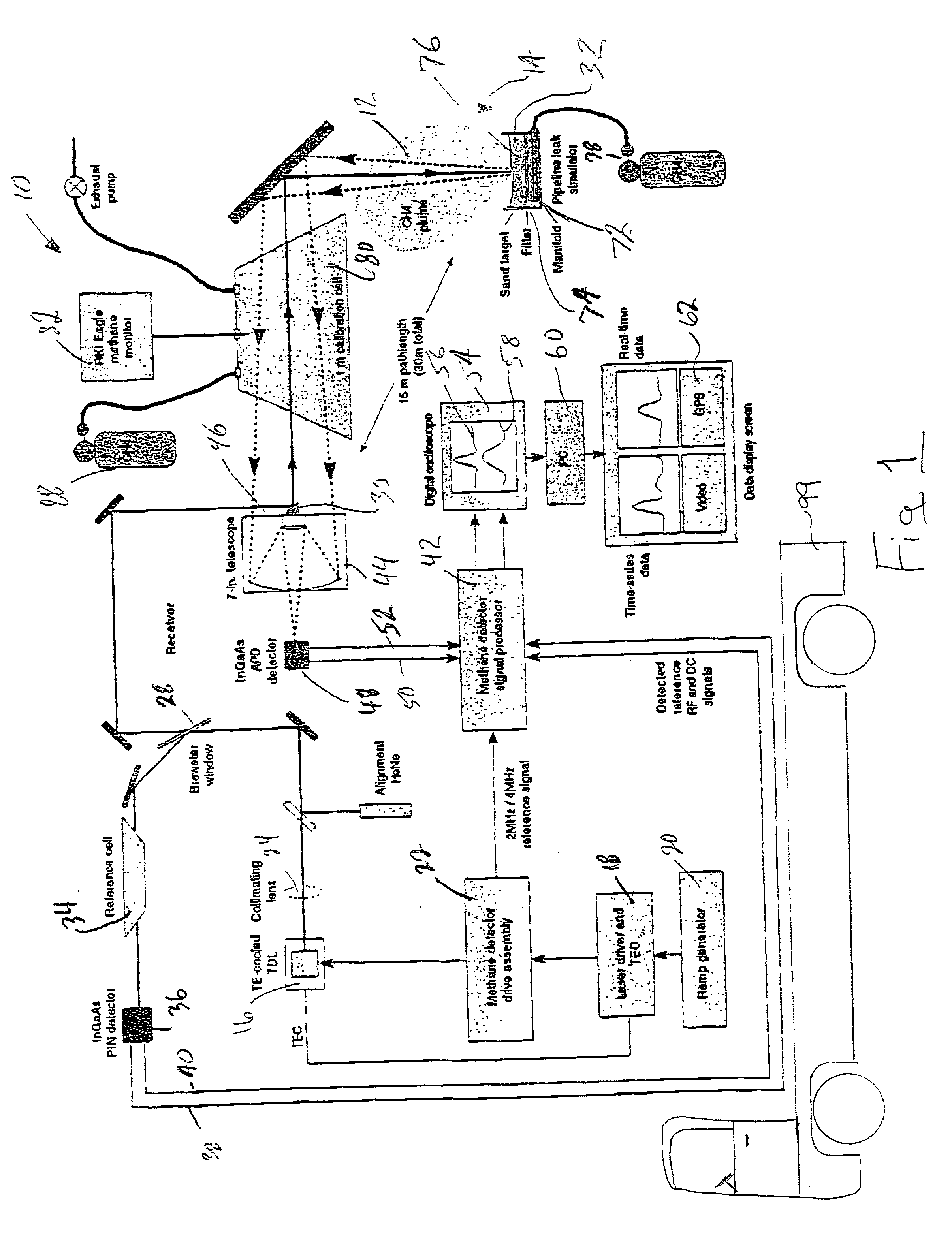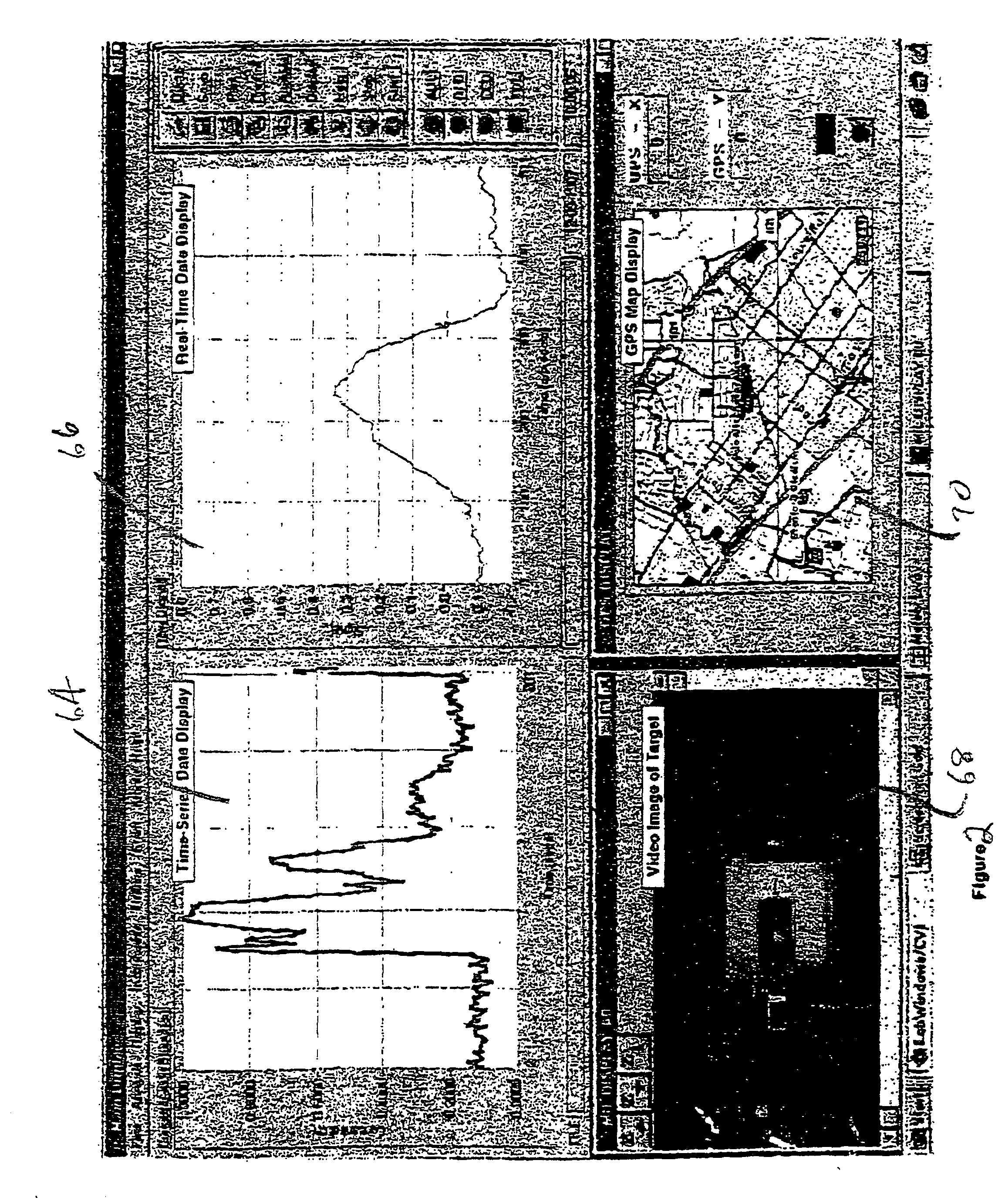Apparatus and method of remote gas trace detection
a gas trace detection and apparatus technology, applied in the direction of optical radiation measurement, instruments, spectrometry/spectrophotometry/monochromators, etc., can solve the problems of high cost of opo-based lidar, prone to alignment problems, complex opo systems, etc., and achieve large losses.
- Summary
- Abstract
- Description
- Claims
- Application Information
AI Technical Summary
Problems solved by technology
Method used
Image
Examples
Embodiment Construction
[0053] In order to test the apparatus 10, remote gas leak simulation was effected by disseminating methane through a manifold 72 over a 3 sq. inch area under a paper filter 74 underlying, and separating the manifold 72 from, a sand target 76 about one half inches deep. The methane needle valve 78 was opened for varying periods of time in order to simulate large and small gas leaks in the 10 to 300 p.p.m. range. The display shown in FIG. 2 is an example of the data collected during one such simulated gas leak.
[0054] In order to calibrate the response of the apparatus 10, a 10 inch diameter, 1 meter long sample chamber or reference cell 80 can be placed in the path of the laser light emitted from the output mirror 30. A pre-calibrated RKI EAGLE (TRADEMARK) methane monitor 82 is connected to the chamber in a manner well known to those skilled in the art. The methane monitor 82 provides an independent measurement of methane concentration in the cell as function of time during the test.
[...
PUM
| Property | Measurement | Unit |
|---|---|---|
| wavelength | aaaaa | aaaaa |
| wavelength | aaaaa | aaaaa |
| wavelength | aaaaa | aaaaa |
Abstract
Description
Claims
Application Information
 Login to View More
Login to View More - R&D
- Intellectual Property
- Life Sciences
- Materials
- Tech Scout
- Unparalleled Data Quality
- Higher Quality Content
- 60% Fewer Hallucinations
Browse by: Latest US Patents, China's latest patents, Technical Efficacy Thesaurus, Application Domain, Technology Topic, Popular Technical Reports.
© 2025 PatSnap. All rights reserved.Legal|Privacy policy|Modern Slavery Act Transparency Statement|Sitemap|About US| Contact US: help@patsnap.com



